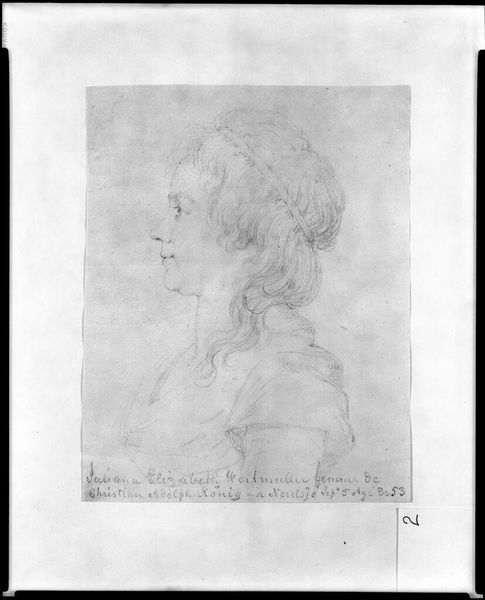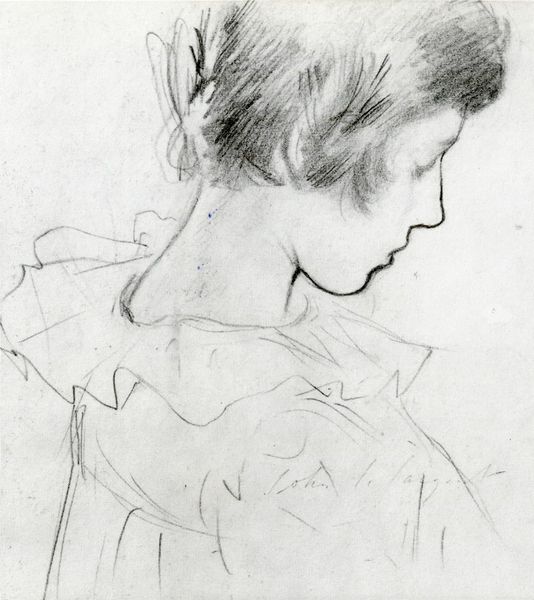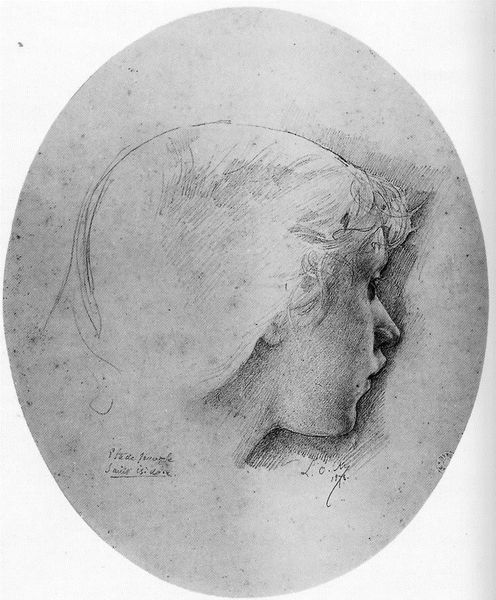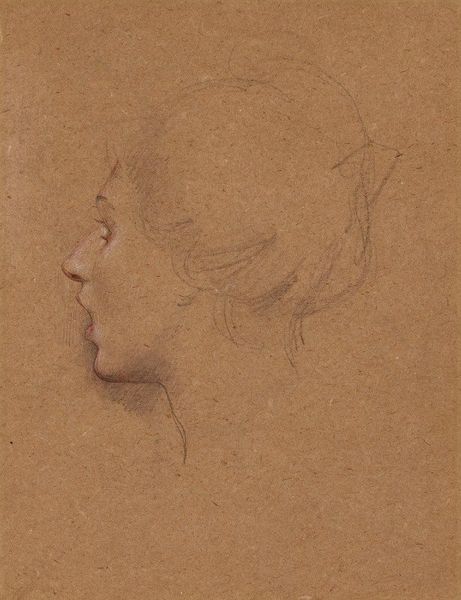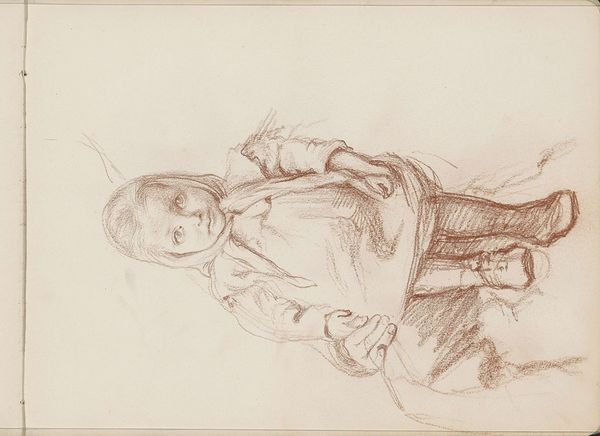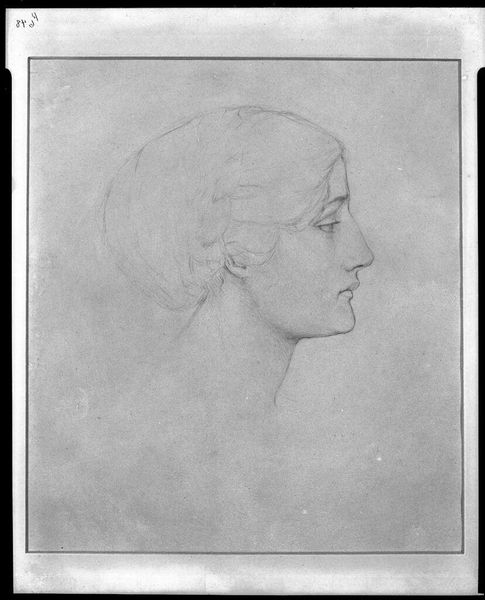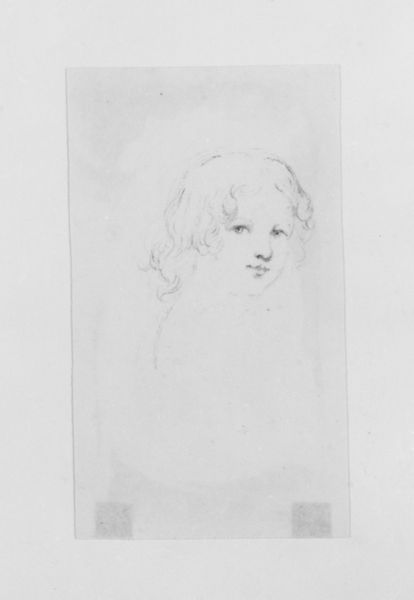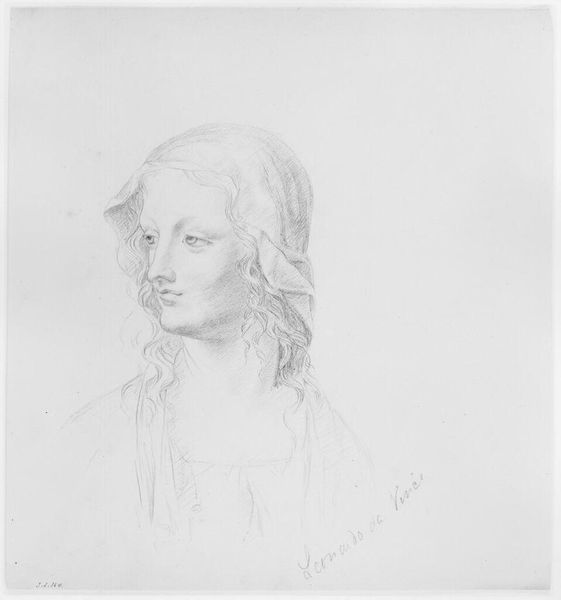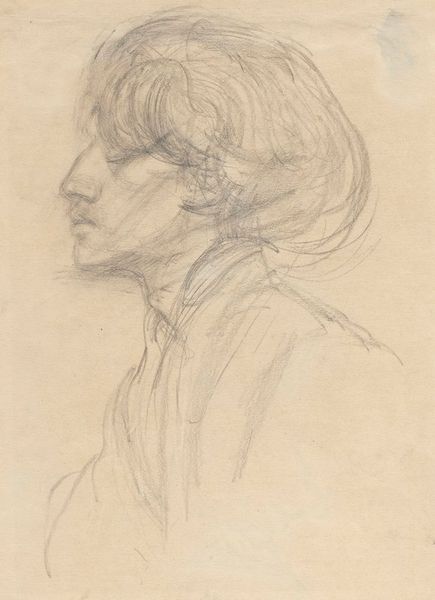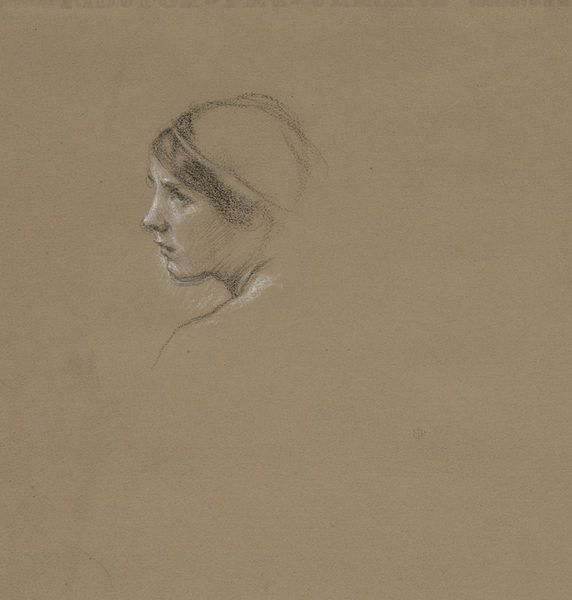
drawing, pencil
#
portrait
#
pencil drawn
#
drawing
#
amateur sketch
#
facial expression drawing
#
girl
#
self-portrait
#
head
#
pencil sketch
#
figuration
#
form
#
portrait reference
#
idea generation sketch
#
pencil drawing
#
romanticism
#
pencil
#
limited contrast and shading
#
line
#
portrait drawing
#
pencil work
#
profile
Dimensions: 8 7/16 x 6 5/8 in. (21.4 x 16.8 cm)
Copyright: Public Domain
Curator: Looking at this drawing, I immediately sense a certain… delicacy. The soft pencil strokes create an ethereal quality. Editor: Indeed. This is "Head of a Girl," a pencil drawing from 1841 by James Varick Stout, currently residing here at the Metropolitan Museum of Art. It’s part of something called the McGuire Scrapbook. What do you see symbolically at play here? Curator: The profile view has long held connotations of classical beauty and refinement. Here, it’s softened by the subject’s youth and flowing hair. Notice how the artist uses light and shadow sparingly. It lends the drawing an innocent quality, almost as if capturing a fleeting thought. Editor: I see echoes of Romanticism here, especially in the fascination with capturing emotions and the inner life, and specifically of young women. There's this tradition in the 19th century of idealizing their virtue, or presenting a kind of pure femininity as representative of the wider culture's virtues. Do you think Stout intended this to be seen publicly? Curator: It’s difficult to say definitively. As part of a scrapbook, its initial audience might have been quite limited: family, close friends perhaps? Its later display reflects evolving curatorial trends that see value in more private or amateur artistic expressions. Now, consider how that affects interpretation. Editor: Exactly. This drawing provides insight into the culture, in a sense. Stout’s artistic hand shows what he, or perhaps his community, deemed worthy of capturing—an idealization of youth and feminine beauty. And we now make it visible. Curator: Precisely. Putting "Head of a Girl" on display grants it new layers of meaning. It transforms it from a personal artifact into a historical and social document open for contemporary contemplation. Editor: A fascinating thought, isn’t it? How an image, initially intended for private contemplation, enters a public dialogue about beauty, representation, and cultural values. It leaves you reflecting on how artistic intention and historical interpretation are constantly intertwined.
Comments
No comments
Be the first to comment and join the conversation on the ultimate creative platform.
